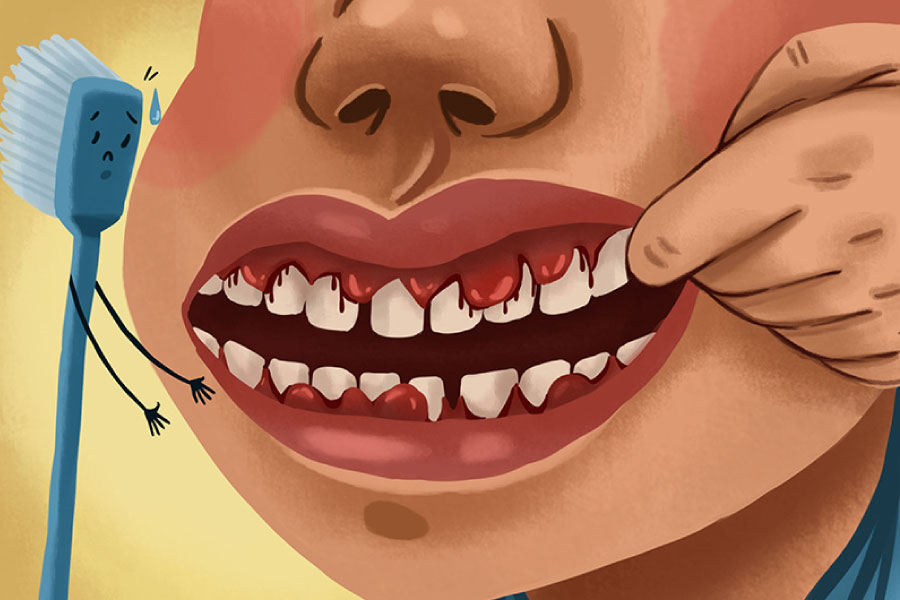
Gum disease has two stages: gingivitis and periodontitis. As the first and mildest stage of gum disease, gingivitis can be reversed! However, if it isn’t treated, gingivitis turns into periodontitis, infections, and tooth loss. How do you know if you have early-stage gingivitis? Here are the most common symptoms.
Tender Gums
When plaque and tartar collect on your teeth, gum irritation occurs. Tenderness or sensitivity is a common symptom. You may feel discomfort when you brush, floss, or press your finger against your gums.
Red, Puffy Gums
Redness and puffiness are other signs of inflammation. Healthy gums are light pink (or darker pink for people with darker skin) and firm. If they look red or swollen, you likely have gingivitis.
Bleeding Gums
Gingivitis can cause your gums to bleed more easily, especially when you brush and floss your teeth. You may be tempted to stop flossing when you see blood, but bleeding gums are a sign that you need to maintain flossing and better oral hygiene! A water flosser might be more comfortable to use and will help clean your gums.
Bad Breath
The bacteria that cause gingivitis also produce unpleasant smells. If you struggle with bad breath, you could be dealing with early-stage gum disease. Establishing a consistent brushing and flossing routine should help reverse gingivitis and improve your breath.
Treating Gum Disease at Queensboro Plaza Dental Care in Long Island City, NY
Gingivitis is a very common dental problem. Brushing, flossing, and routine cleanings at the dentist can help prevent and reverse gingivitis! As soon as you notice symptoms of gingivitis, start improving your oral hygiene and schedule a cleaning with the Queensboro Plaza Dental Care team. Even if you don’t have symptoms, it’s important to visit us at least twice a year. Gingivitis doesn’t always cause pain, but a dentist can spot symptoms you can’t. Please contact us to book an appointment!
